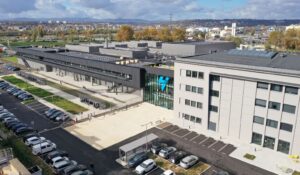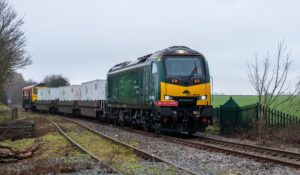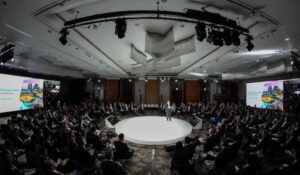Hydrogen car news: Tony Robinson hails Riversimple ‘solution’ after test drive
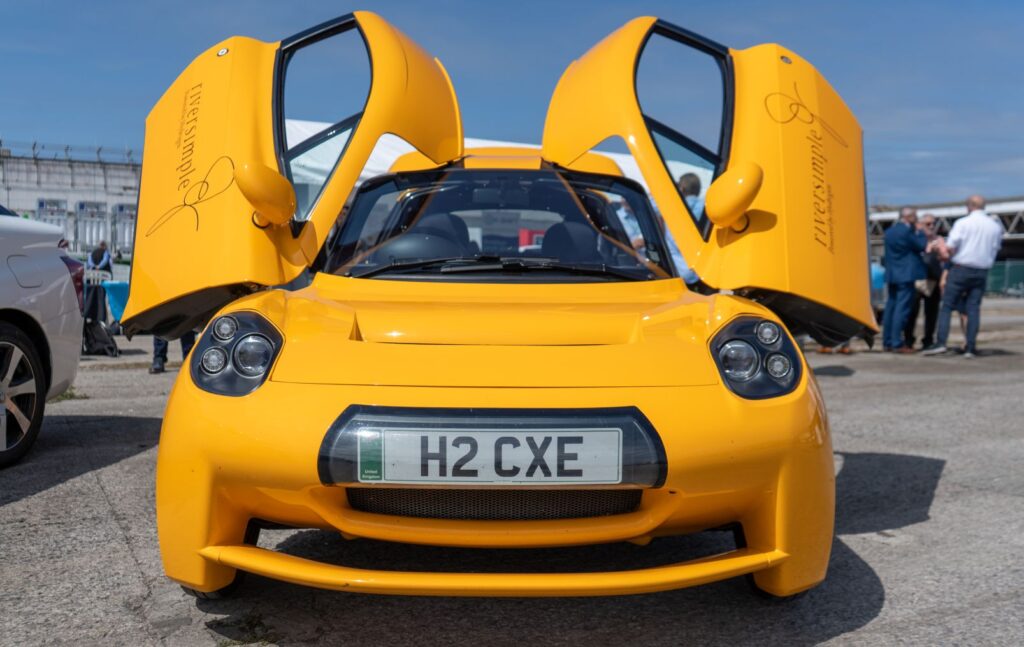
Tony Robinson test drove the hydrogen-powered Riversimple car on his Marvellous Machines series on U – and feels it is an ‘engineering solution to an existential problem’.
Hot on the heels of Rowan Atkinson’s test drive of Toyota’s European-built hydrogen-powered Toyota GAZOO Racing Europe Yaris H2 concept at the 2024 Goodwood Festival of Speed, his Blackadder co star Robinson has also been shining a light on the hydrogen automobile industry.
Robinson interviewed Hugo Spowers MBE, the Company Architect and MD at Riversimple Movement Ltd, on his TV show Marvellous Machines – then jumped behind the wheel of Spowers’ Riversimple prototype, which is powered by a fuel cell.
Spowers has a strong automobile background, having owned Prowess Racing Ltd for 13 years from 1984-1997, during which time the company focused on designing and manufacturing single seat racing cars, the restoration of historic racing cars, and fielding racing teams.
In 2000, he became the owner of OSCar Automotive Ltd, which focused on ‘development of business strategy for bringing hydrogen fuel cell cars to market [and] development of two technology demonstration projects to prove the viability of hydrogen fuel cell cars using existing technology’.
In 2007, Spowers changed the name of the company to Riversimple and says on his Linked In profile: “No product on the planet matches the value for money of a modern car, with all its complexity and refinement, but it is now unfortunately completely unfit for purpose.
“I founded Riversimple to do something about this. A step change in vehicle technology is both essential and possible.
“It is much easier to design around the characteristics of hydrogen fuel cells than to squeeze a fuel cell into cars designed around petrol engines.
“However, the principal barriers are to do with people, politics and business.
“The business models of today were forged by the 20th century, when the key constraints of the 21st century – resource depletion, climate change and energy security – were not on the radar; it is easier to design a business model to suit these new constraints than to tweak one that was designed to do something fundamentally different.
“We have taken a Whole System Design approach to both the design of the car and the entire business model.
“The first research project was in a consortium with Morgan, the LIFECar, followed by a tech demonstrator urban vehicle.
“We completed a prototype of our first car designed for Type Approval, in 2016, the Rasa – 0-60 in 9.5 secs, cruise of 60 mph, range of 300 miles, and 250 mpg equivalent.
“Designed for local use, we now are building our first production run of 20 cars to be deployed in the Abergavenny area on a contract, covering all costs, inc. fuel – selling mobility as a service rather than a car as a product.”
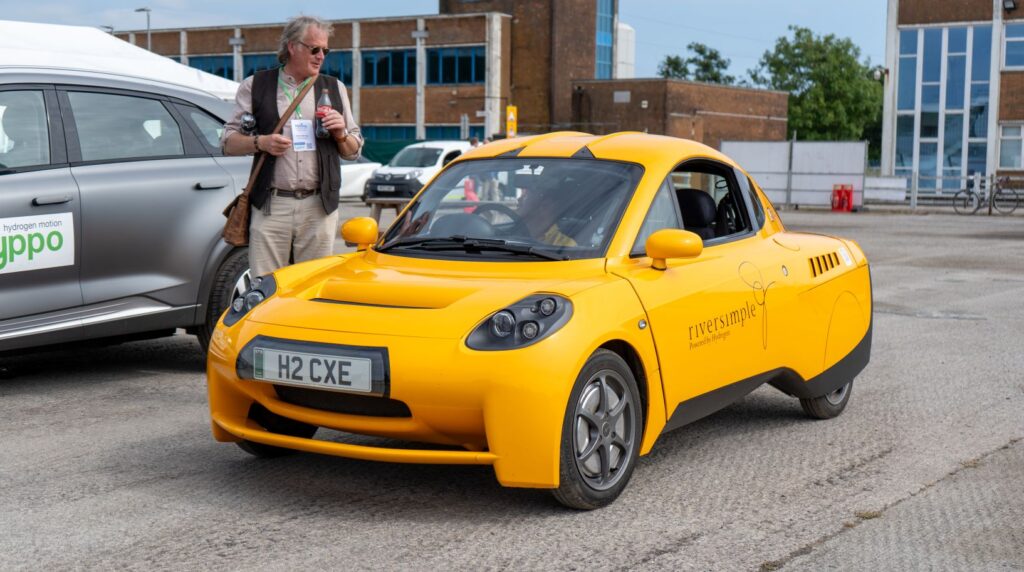
Robinson drove the Rasa as part of an episode called ‘Green Machines’ and said: “Roaring probably isn’t quite the right word for this car because it’s very quiet – virtually silent.
“I know that a few years ago, a car this quiet would have been a big deal – and it isn’t any more because there are so many battery-powered cars.
“But there is something very special about this one because they may have just invented a car that runs…on water.
“The water-powered car is like the holy grail of automobiles – many have tried to unlock the secret.
“In 1935, a US patent was even granted for a carburetor that ran on pure water but the design never took off.
“Nearly a century later, I’m meeting the man who appears to have found the answer.”
Spowers explained: “I’ve been working on the technology for 20 years now – and the first car we designed for public roads ran first in 2016 – that was the first time I drove a Riversimple car on a public road.
“It’s a hydrogen car – it’s actually an electric car but it has no batteries. The water is what comes out – it’s not what goes in. We have a fill-up flap just like a normal car – there’s a socket and you put a hose onto that. You fill it up with pressurised hydrogen.
“The fuel cell is in the back of the car. In the boot we’ve got the fuel tank behind the seats, and behind there is the fuel cell.
‘That package of fuel tank and fuel cell replaces the battery. The exhaust partly comes out through vents [in the boot door].”
Dr Nico Sergent is the Senior Engineer working on the Riversimple project, and he said: “We’ve got a much smaller fuel cell than other cars, so the car is extremely efficient – the fuel cell itself is only about 10 kilowatts which is 13 horsepower.
“That’s for cruising. That’s the power you need to cruise at top speed which is 60mph.
“In any car you drive, you’ll notice on the motorway you use very little throttle…engines are really oversized for acceleration because the cars are so heavy.
“So for acceleration and braking [on Riversimple] we’ve got super capacitors. A super capacitor pack is a device that can store electricity – a bit like a battery, but a battery will rely on a chemical reaction to store energy – and the capacitor holds the energy as static electricity, like a woolly jumper. It holds the electricity and can release it very quickly.”
Robinson revealed his admiration for the work done by Spowers and Sergent, saying: “The super capacitors hold just enough energy to get the moving from a standing start – and for accelerating up to cruising speed – the fuel cells then take over, and propel Rasa for 80 per cent of the journey.
“It sounds complicated – but it may just be the recipe for a new model of motorised transport.”
YOU MAY ALSO LIKE: Wrightbus: Meet the world’s first hydrogen double decker bus
He added: “You’ve designed a car that burns clean fuel, and out of your exhaust pipe comes water – you’re Merlin aren’t you? You’ve discovered the Holy Grail.
“Why aren’t we all driving hydrogen cars?”
Spowers’ answered: “It is a genuinely new technology – battery vehicles are not new…we’ve had battery vehicles for as long as we’ve had petrol vehicles – and in fact the land-speed record was broken by a battery-electric vehicle in 1899.
“Fuel cells, though, are genuinely new, so it has taken a lot of work to get fuel cells to deliver enough power for a car at a price that customers can afford, with the reliability that we have come to expect.
“At the moment, most hydrogen comes from natural gas, methane, and in manufacturing it, you release CO2 into the atmosphere, so it’s not clean – it has a carbon footprint.
“Now that’s a very controversial point, as people say the only good hydrogen is green hydrogen. Increasingly green hydrogen is defined as hydrogen that is made by electrolysing water using green electricity – renewable electricity from wind or solar. We can do it – and I believe that will be a major source of hydrogen in the future.”
There are around 15 hydrogen pumps across the UK and Robinson posed the question: “How much is a full tank going to cost?”

Spowers replied: ‘At the moment, most hydrogen is sold at £10 a kilo, and it’s not driven by the actual cost of the hydrogen – but all the logistics of transporting it around when very little of it is made.
‘This is 1.7 kilos, so this will be about £17 to fill.”
Conclusion
Robinson says ‘it’s clear that hydrogen is a wondrous source of energy’ – something we wholeheartedly agree with here at Driving Hydrogen.
He adds that ‘to properly harness that power, we probably do need a revolution – but the genius of Rasa is that maybe it’s not our behaviour that needs to change – instead the transformation is mechanical’.
Robinson concludes his show by suggesting that Spowers and his team have come up with what is “truly an engineering solution to an existential problem”.
READ MORE: Festival of Speed news: Rowan Atkinson hails Toyota’s ‘courage in pursuing the hydrogen idea’

